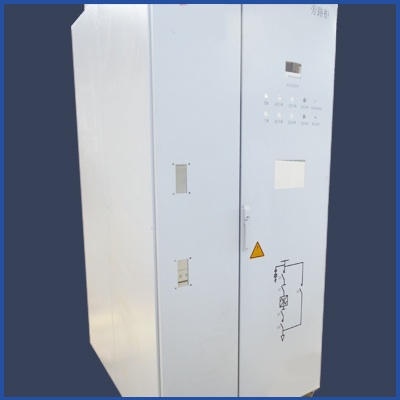1、隐藏的泄漏:冷空气从活动地板下的空间中泄漏出来,进入到相邻的空间或支撑柱中。这种泄露相当的普遍,并导致了冷通道机房环境中的压力损失,从而使得别处满是灰尘的热空气或潮湿的空气进入进来。避免这个问题的方法便是去活动地板底下检查周边和支撑柱,并封住你发现的任何漏洞。
1. Hidden leakage: cold air leaks from the space under the raised floor and enters the adjacent space or support column. This kind of leakage is quite common and leads to the pressure loss in the cold channel machine room environment, which makes the hot air or wet air filled with dust enter elsewhere. The way to avoid this problem is to check the surrounding and supporting columns under the raised floor and seal any holes you find.
2、太多的开孔地板:在热通道和空白区域放置开孔地板是毫无理由的。这样会浪费冷却能力。还有可能是在机架的进气口放置了太多的开孔地板。IT机架顶部的温度低于正常温度便是一大危险信号。
2. Too many perforated floors: There is no reason to place perforated floors in hot channels and empty areas. This will waste cooling capacity. It is also possible that too many perforated floors are placed at the air inlet of the rack. The temperature at the top of the IT rack is lower than the normal temperature, which is a big danger signal.
3、未密封的活动地板开口:尽管许多冷通道数据中心运营商已经努力密封了电缆开口及活动地板中的其他漏洞,但很少人完成了这项工作。剩下的漏洞会导致大量的冷空气逸入不被需要的区域。配电单元或远程电源板等电气设备是寻找未密封开口的一个特别重要的地方。
3. Unsealed raised floor openings: Although many cold channel data center operators have tried to seal cable openings and other holes in the raised floor, few people have completed this work. The remaining holes will cause a large amount of cold air to escape into the unwanted area. Electrical equipment such as power distribution unit or remote power panel is a particularly important place to find unsealed openings.
4、机架密封性不好:把备用面板放置在空的机柜区域是气流管理的常识,然而并不是每个人都会这样做。一些机柜没有被设计好,安装钢轨与机柜边缘之间被封死。关心效率的经营者会密封那些开口以及机柜底端的潜在开口。
4. The sealing of the rack is not good: it is common sense to place the spare panel in the empty cabinet area, but not everyone will do so. Some cabinets are not well designed, and the installation rail and the cabinet edge are sealed. Operators concerned with efficiency will seal those openings and potential openings at the bottom of the cabinet.
5、温度和湿度传感器刻度不准:有时供应商使用了未校准的传感器,有时刻度会随着时间的推移而变得不准确。这将导致管理不善的冷却单元不能协同地工作。建议运营商每六个月校准一次温度和相对湿度传感器,并且在必要的时候进行相应的调整。
5. Inaccurate scale of temperature and humidity sensor: sometimes the supplier uses an uncalibrated sensor, and sometimes the scale will become inaccurate over time. This will cause poorly managed cooling units to not work together. It is recommended that the operator calibrate the temperature and relative humidity sensors every six months and make corresponding adjustments when necessary.
6、让CRAC互相牵制来控制湿度:使两个CRAC互相牵制的另一个好方法是给相邻的CRAC供以不同温度的循环空气。因此,CRAC有不同的湿度读数,一个结束加湿,而另一个正在干燥空气。解决这个问题需要巧妙地理解湿度图,并准确的设置湿度控制点。
6. Let the CRACs control each other to control humidity: Another good way to make two CRACs control each other is to supply different temperature circulating air to the adjacent CRACs. Therefore, CRAC has different humidity readings, one end humidification, and the other is drying the air. To solve this problem, we need to skillfully understand the humidity chart and accurately set the humidity control point.

7、物以稀为贵:许多的冷通道数据中心运营商预置了过度的冷却能力。如果拥有的冷却能力大于所需,并无法过剩的CRACs的,那么整个的冷却方案都会被连累,因为太多的单元处于低效率状态。地板下的冷却温度很高,且某些机架很难被冷却时,运营商一贯的反应便是运行更多的冷却单元。然而与直觉相反,正确的做法应该是运行更少的CRACs来降低负荷。
7. Thinning is precious: many cold channel data center operators preset excessive cooling capacity. If the cooling capacity is greater than required and the safety of the excess CRACs cannot be guaranteed, the whole cooling scheme will be affected because too many units are in an inefficient state. When the cooling temperature under the floor is very high and some racks are difficult to be cooled, the operator's consistent response is to run more cooling units. However, contrary to intuition, the correct approach should be to run fewer CRACs to reduce the load.
8、闲置的
济南机箱机柜空间:这是另一个明显的因素,但出于某种原因没有被每个人所重视。当一个或者多个机柜空间被空置,将会破坏气流平衡,导致废气循环进入冷通道,或是在冷通道损失冷空气。这种情况将导致过度冷却,及供应多于实际所需的空气来弥补损失。
8. Idle Jinan chassis and cabinet space: This is another obvious factor, but for some reason it is not taken seriously by everyone. When one or more cabinet spaces are empty, the air flow balance will be damaged, resulting in exhaust gas circulation into the cold channel, or cold air loss in the cold channel. This situation will lead to excessive cooling and supply more air than is actually required to compensate for the loss.
9、糟糕的机架布局:理想情况下,你想把机架按加热/制冷分别排成一行,并把主要的CRACs放置在每行的两端。拥有一小块机架且没有特定的方向并不能帮助任何人。无论是从前往后排列机架,还是使CRACs与IT行的方向相同,都无济于事。
9. Bad rack layout: ideally, you want to arrange the rack in a row according to heating/cooling, and place the main CRACs at both ends of each row. Having a small rack without a specific direction can't help anyone. It doesn't help to arrange the rack from front to back, or make the direction of CRACs and IT lines the same.
10、冷却管理没有受到应有的重视:没有想到改进冷却管理方式的好处,使得运营商的容量搁浅并花费了更高的运营成本。做一些如安装备用面板等简单的工作就可以从中获益,但它们常常被忽视。
10. Cooling management has not received due attention: the benefits of improving cooling management methods have not been considered, resulting in the stranding of operators' capacity and higher operating costs. You can benefit from doing some simple work, such as installing a spare panel, but they are often ignored.
That's all about the 10 questions about the installation of chassis and cabinet. What are your thoughts or requirements? You can follow our website http://www.tongyuhengcheng.com Leave a message or call us directly to learn more!
